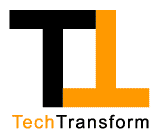Building Revenues in Today's Environment
Building Revenues In Today's Environment
|
TechTransform, August 23, 2001: As an early stage technology company, it's more important than ever before to gain early customers and revenues from your products. There are several reasons for this.
First, venture capitalists and other financing organizations are demanding to see "validation" of the market demand for your product. They want to see "traction" through early customers and thus minimize the risk that the product is simply a better "mousetrap".
Second, gaining early customers is critical in gaining additional customers. Prospects always want to know who are your current customers and what their experiences have been.
Finally, in times like these when capital is in short supply, customers can supply needed cash to fund company operations.
Gaining new customers and increasing revenues is not an easy task. Most emerging growth companies don't get it right and fail even though many start with great technologies.
In our assignments, we've been able to help companies quickly meet their revenue goals by focusing on several key areas within the company. In the rest of this article, you'll find the key areas we focus on and our approach to building revenues:
The Product.
We all know that the product needs to exceed customer expectations. But it's more than that. In the current environment, selling a large expensive product is extremely difficult. Budgets are tight and companies are looking to get more results from solutions already in-house.
One way of getting around this problem is to "modularize" the product so that customers can start by purchasing at a lower cost and lower risk entry point. With this approach, you more quickly become an "existing" vendor to your customer and then can upsell additional products and build a big-ticket business.
In order to successfully execute this strategy, you'll need a well thought out product road map and product management strategy that allows you to build a line of integrated products at the right price points.
The Customer and the Channel.
Defining your customer properly is absolutely critical since it dictates many aspects of your company including the product roadmap, marketing, and sales. Is your goal to sell to the "end user" or might it be easier to sell your technology to larger companies who are already selling into the market and can integrate your technology into their offerings?
For many early stage companies, we often recommend the latter approach (typically under an OEM or licensing arrangement) since these "customers" are looking for cutting edge solutions and issues such as limited branding, lack of extensive customer references, etc., are much less important.
If the strategy is selling directly to the end-user, then you must make the right decisions with regards to the most effective verticals, decision makers, value proposition, etc. and then put your limited resources quickly and effectively to work (more on this below).
The Partnering Strategy.
Many companies feel the need to do everything themselves. They typically map out the entire solution and then spend lots of money and time trying to put the whole thing together. This philosophy gets you into trouble.
One recent client was trying to build an entire turnkey product. We found they could lower product development cost and get their product more quickly to market by working with partners, which would let them concentrate on their core competencies.
The Business Model.
How you sell your product and make money is one of the most difficult decisions you will make. As as a transformation firm, we spend significant time with our clients helping them to evaluate the different ways in which they can "sell" their solution to the marketplace. Choices include:
The choice you make has a major impact on your revenue growth since potential customers may feel comfortable with one type of business model but not another. And of course, it needs to be a model that makes money while delivering the promised value proposition to the customer.
We see lots of companies with business models that simply won't them become profitable over the long term. Therefore, discovering the right business model is essential to survival.
The Marketing and Sales Process.
Nobody has time any more for traditional long lead, long cycle time marketing and sales. In order to quickly build revenues, companies need to adopt what we call "adaptive" or "mistake-based" marketing and sales techniques. These techniques incorporate immediate feedback mechanisms so that the chosen marketing/sales program can be quickly evaluated to see if it's delivering the desired result, and if not, allows for easy refining.
The type of program we propose to implement will depend upon the company and its solution. For example, companies who adopt the modular product approach are able to do mass lead generation and channel building.
In our transformation work, we've gotten it down to a short cycle approach that has marketing working with sales, experimenting tactically from hour to hour with what works, and continuously revising pitches and approaches.
Beyond Sales
As you can see from the above, building revenues is a lot more than just traditional Sales. It's about taking a hard look at your organization and then optimizing all the key components for revenue growth.
Companies that start this process early in their life-cycle will find it easier to get and keep customers, build revenues in the short term with a profitable long term model, and meet their cash needs from a combination of internally generated cash and outside capital infusion.
|
August 23, 2001
Copyright © 1996-2011 Riggs Eckelberry Marketing Group, Inc. All Rights Reserved
TechTransform and the interlocked "T" are trademarks of REMG, Inc.
